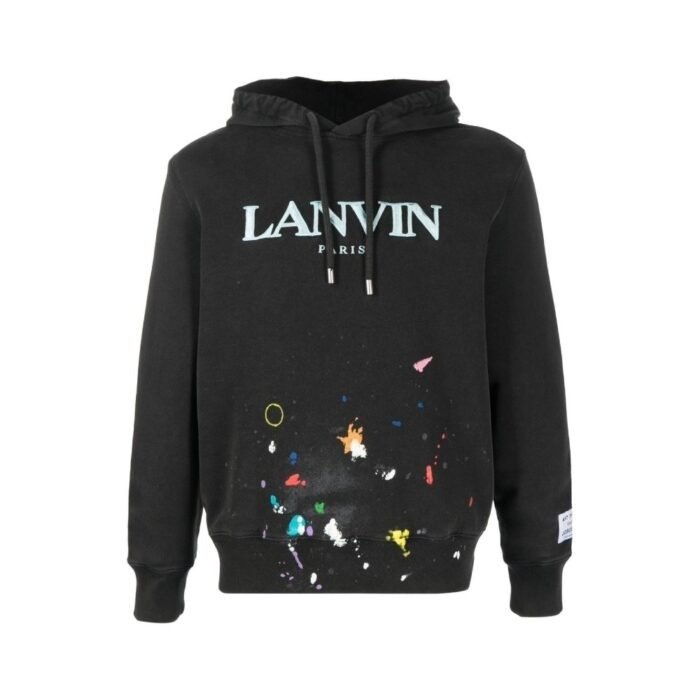Legacy of Lanvin a Century of French Elegance
Introduction
Lanvin, one of the oldest and most prestigious fashion houses in the world, has stood as a beacon of French elegance for over a century. Founded by Jeanne Lanvin in 1889, the brand has evolved with the changing tides of fashion while staying true to its core principles of sophistication, craftsmanship, and innovation. From haute couture to perfumes, Lanvin has crafted a rich legacy that resonates with both fashion connoisseurs and modern consumers. This article explores the journey of Lanvin, its influence on global fashion, and how it continues to inspire new generations.
1. The Origins of Lanvin: A Visionary at the Helm
The story of Lanvin begins with Jeanne lanvin a talented Parisian milliner and dressmaker. Initially creating clothes for her daughter, Marguerite, Jeanne’s work quickly caught the attention of wealthy Parisians. By 1909, she had officially transformed her business into a fashion house, marking the beginning of Lanvin’s ascent in the world of haute couture.
Unlike many designers of her time, Jeanne Lanvin’s focus was on elegance and timeless designs rather than fleeting trends. She introduced luxurious fabrics, intricate embroidery, and artistic flair to women’s clothing, giving rise to a distinct style. Lanvin was not just a fashion house—it became a lifestyle brand, offering everything from children’s wear to home décor, all rooted in elegance.
2. The Rise of the Lanvin Empire: A Multidimensional Brand
In the 1920s, Lanvin diversified its portfolio, becoming one of the first fashion houses to create collections for men and children. Jeanne Lanvin’s idea was revolutionary at the time: to design wardrobes for the entire family under one label. The concept of “family dressing” became part of the brand’s DNA.
Lanvin also ventured into the world of fragrance, launching its iconic perfume, Arpège, in 1927. Inspired by Marguerite’s piano practice, Arpège became synonymous with the brand’s identity—elegant, sophisticated, and enduring. Today, it remains one of Lanvin’s most celebrated creations.
3. The Lanvin Aesthetic: Defining French Elegance
Lanvin’s signature aesthetic combines romantic femininity with artistic details. Jeanne Lanvin was known for her love of embroidery, floral motifs, and fluid silhouettes. Her designs celebrated freedom of movement while remaining polished and refined, making them popular among women of high society.
A key element of Lanvin’s design philosophy was the use of color. Jeanne often worked with soft pastels, shades of blue (now famously known as “Lanvin Blue”), and luxurious materials such as silk and velvet. These details created clothing that exuded charm and grace while remaining modern and wearable.
4. The Challenges of a Changing Fashion Industry
Despite its early success, Lanvin Hoodie faced challenges as the fashion world evolved. After Jeanne Lanvin’s passing in 1946, the brand experienced periods of turbulence, changing ownership multiple times and struggling to maintain its identity. However, throughout these transitions, Lanvin remained a respected name in the industry.
It wasn’t until the early 2000s, under the creative direction of Alber Elbaz, that Lanvin re-emerged as a leading force in fashion. Elbaz brought a fresh perspective to the house while staying true to its heritage. His draped dresses, playful embellishments, and focus on craftsmanship resonated with both fashion critics and consumers, propelling Lanvin back to the forefront of the luxury market.
5. Lanvin’s Impact on Modern Fashion
Lanvin’s influence on the fashion industry is undeniable. It was one of the first fashion houses to understand the importance of branding beyond clothing. Lanvin’s approach to lifestyle products, including perfume and home décor, set the stage for modern luxury houses like Chanel and Dior to follow suit.
Lanvin also played a pivotal role in the democratization of luxury fashion. Under Alber Elbaz, the brand embraced ready-to-wear collections, making its designs more accessible to a wider audience. This shift mirrored the growing demand for luxury clothing that could be worn every day, without sacrificing craftsmanship or style.
6. Lanvin in the 21st Century: A New Era of Innovation
Today, Lanvin continues to evolve under new leadership, merging tradition with contemporary innovation. The brand’s latest collections maintain the elegance that Jeanne Lanvin envisioned, while also incorporating modern elements such as bold prints, asymmetrical cuts, and streetwear influences.
Lanvin’s expansion into digital retail and collaborations with other artists and designers reflect its adaptability in a fast-changing fashion landscape. The brand remains committed to sustainability, adopting eco-conscious practices to meet the growing demand for ethical fashion.
7. Lanvin’s Legacy: A Lasting Influence on Fashion
lanvin sneakers legacy is not just defined by its luxurious products but by the philosophy it embodies—an enduring celebration of beauty, elegance, and individuality. Jeanne Lanvin’s belief in designing for every aspect of life, from clothing to fragrances, has inspired many luxury brands to create holistic experiences for their customers.
Moreover, Lanvin’s success is a testament to the power of craftsmanship and creativity. By staying true to its heritage while embracing innovation, the brand has secured its place as a timeless icon in the ever-changing world of fashion.
8. Conclusion: The Future of Lanvin
As Lanvin moves forward into the future, it carries with it more than a century of history and craftsmanship. The brand’s ability to evolve without losing its essence ensures that it will remain a symbol of French elegance for years to come. Whether through haute couture, perfumes, or ready-to-wear collections, Lanvin continues to inspire individuals around the world to embrace style, grace, and sophistication.
In a world where trends come and go, Lanvin’s legacy proves that true elegance is always in fashion. With its rich history and commitment to quality, Lanvin stands as a reminder that luxury is not just about products—it’s about an enduring spirit of artistry and excellence.
By remaining true to Jeanne Lanvin’s vision, the house of Lanvin has secured its place in fashion history. As it continues to write new chapters in its journey, one thing is certain: Lanvin will always be synonymous with timeless French elegance.




![The Best Tools for Managing Search Engine Optimization[SEO] in Dubai](https://softnewsdaily.com/wp-content/uploads/2024/10/seo-links-webinar-hand-cyberspace-concept-768x768.jpg)

